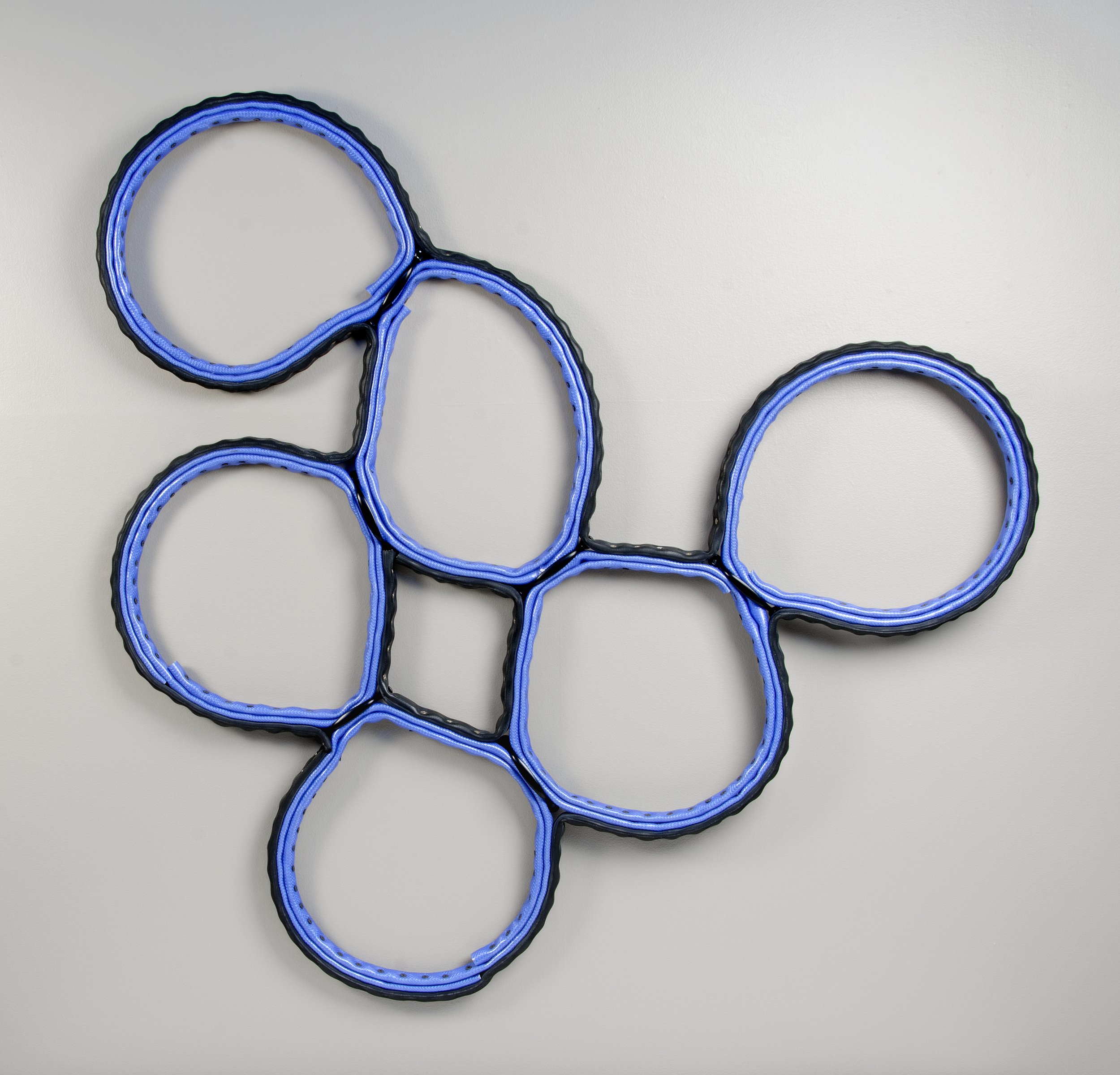Constructivism, Urbanism, Lexicon of Ethics ante-tracery - rubber and screws

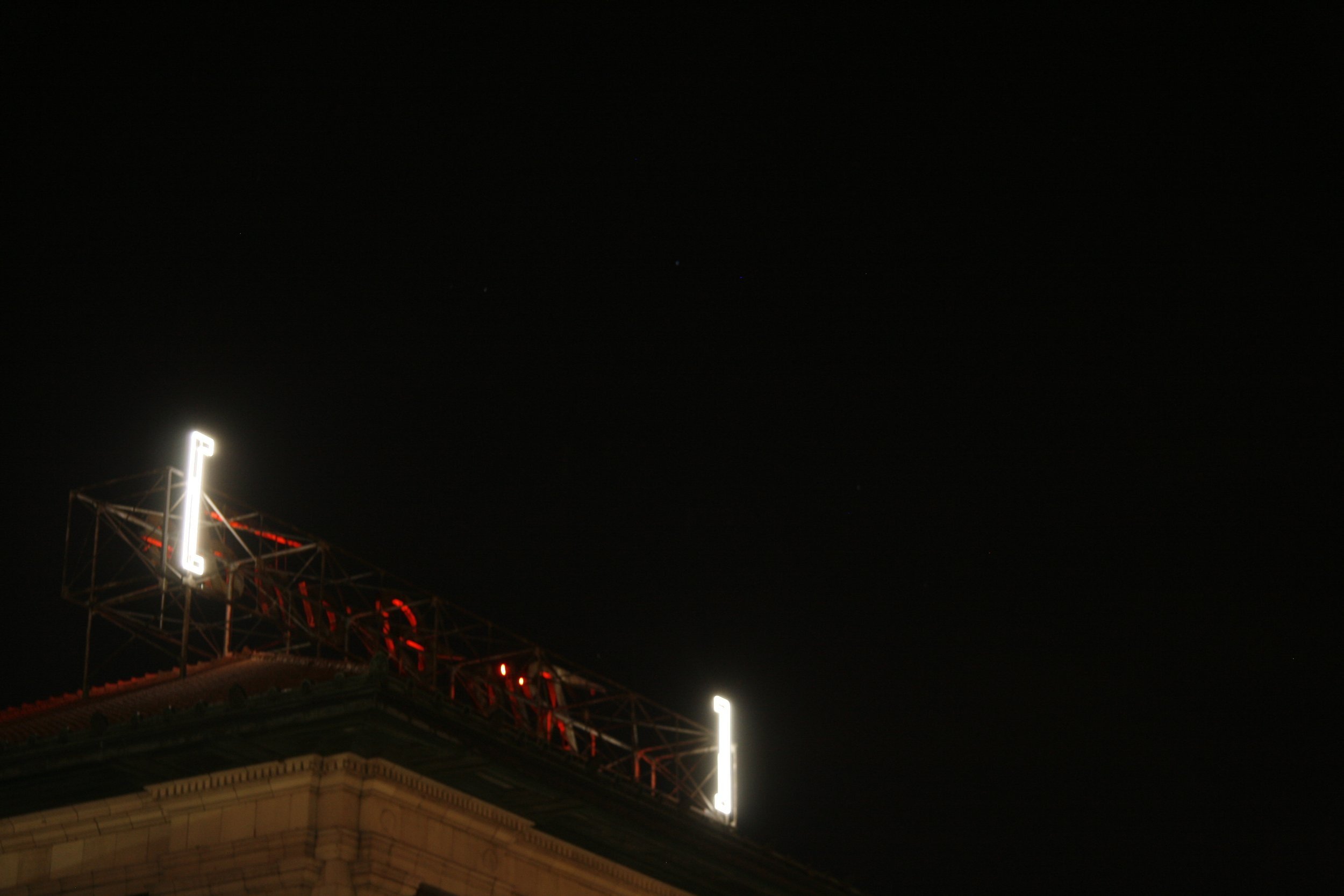
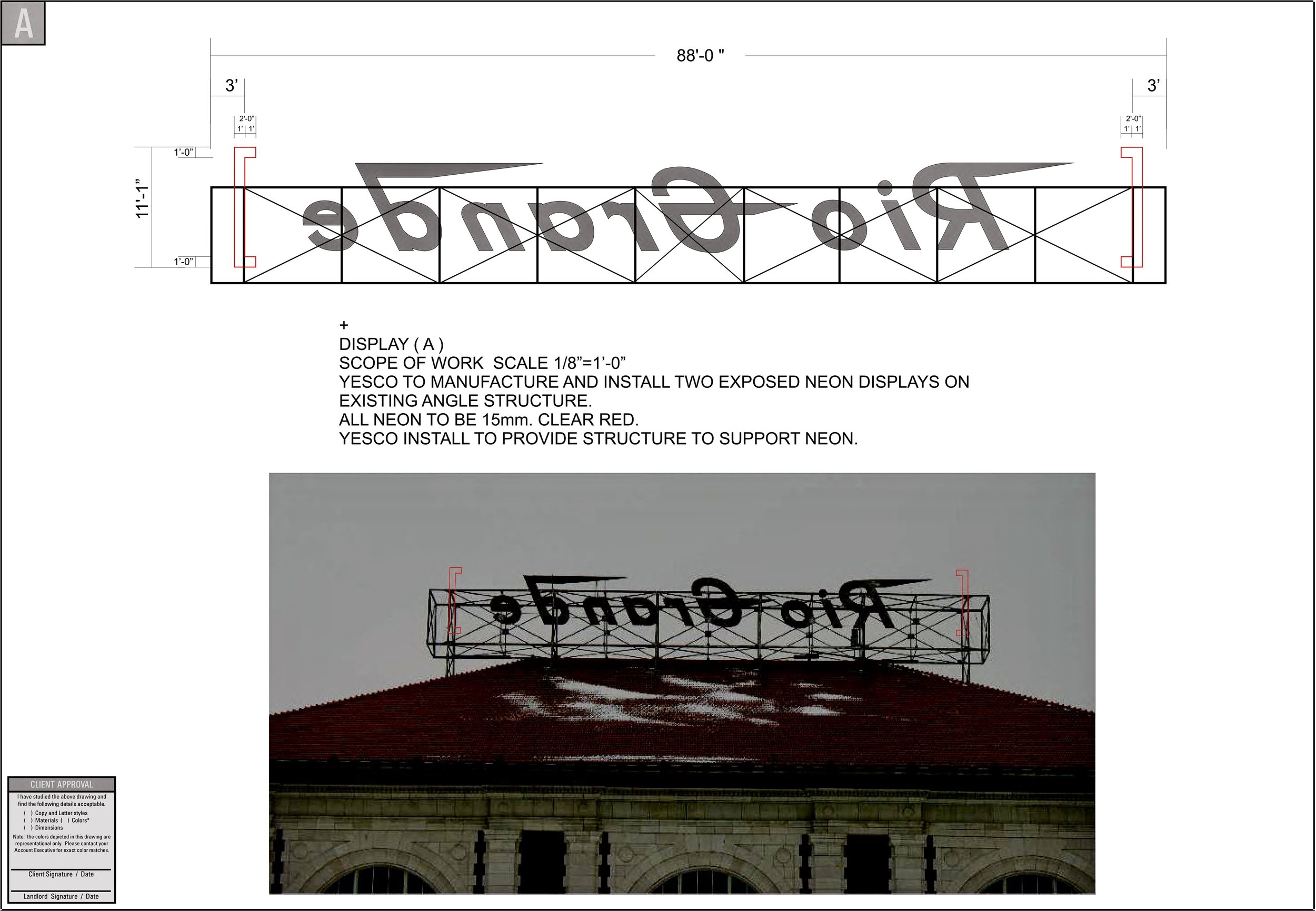


wRonGsiDe, neon, steel, aluminum, 12' x 2' x 6" (each end)
After investigating the Rio Grande depot as the site for an artwork, I decided to engage the exterior of the building. As I was drawn to the large, iconic Rio Grande sign that sits atop the roof, my own personal history with Salt Lake City and the greater Salt Lake valley came into play. It (re)occurred to me that the sign was made exclusively for the East Side, and that the depot marks a border zone of sorts that divides the city, and by extension, the whole valley into two parts, East and West. I wanted to highlight the unconsidered, spare skeleton face of the sign that presented itself to the West side. The installation, by parenthetically framing this side of the sign’s armature, invites the viewer to consider what a sign for the wrong side of the tracks might say.
wRonGsiDe timelapse
video still from rmjshr - Budapest Site Walks 1 - 6
rmjshr (Budapest Site Walks 1 - 6)
A series of 6 site walks documenting place position/scale/orientation



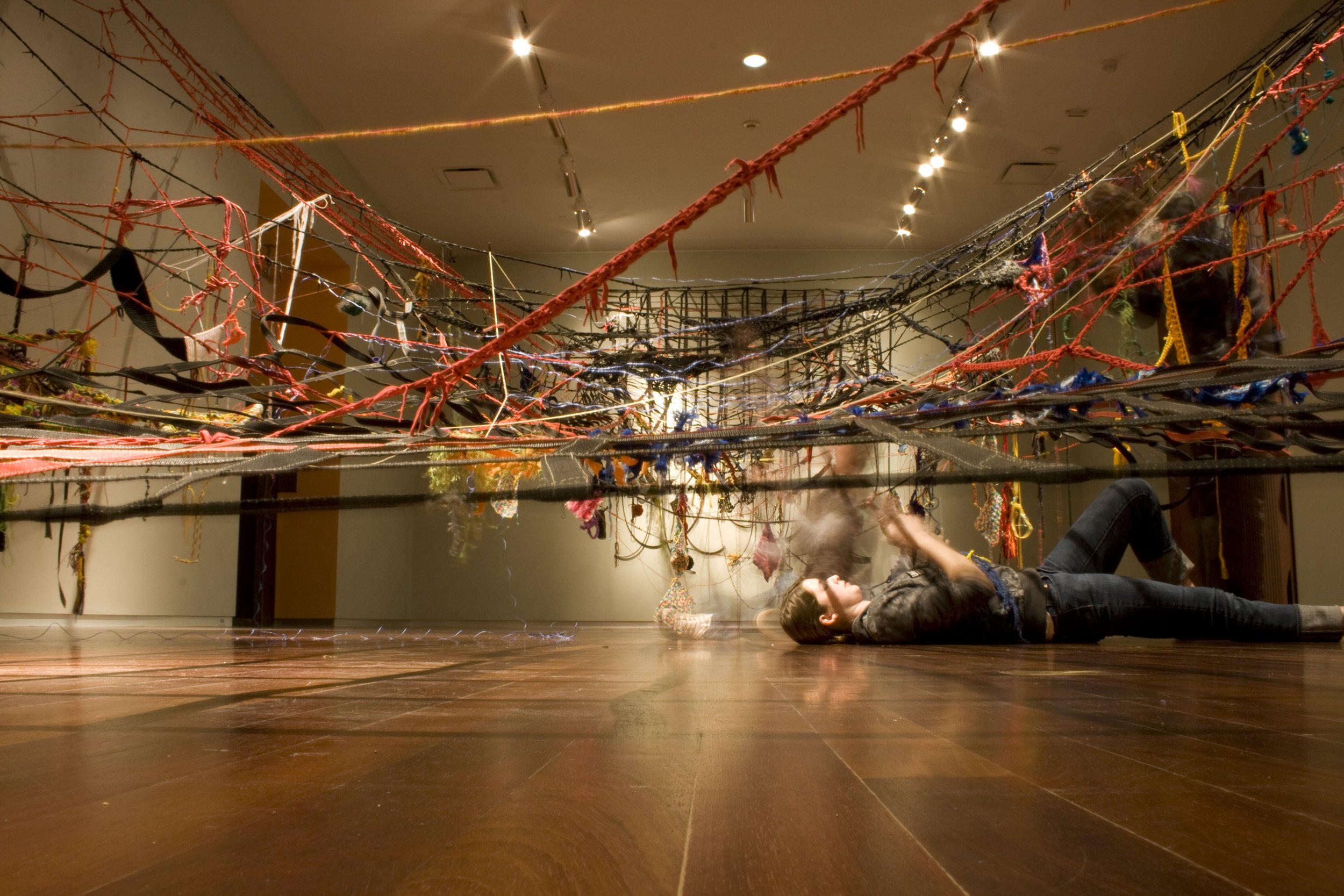


&ME! (cargo nets, shoelaces, yarn, rubber, human hair, paper)
A two-part, layered collaboration, a sculpture and drawing hybrid of sorts. Artists Sheila Pepe and Colby Brewer work in the overlapping areas that exist between drawing and sculpture. An initial collaboration took place between Brewer and Pepe, who transformed the empty gallery space into both a walk-in environment and psychological playground. Brewer connected and hung four cargo nets, bifurcating the space and altering its functionality, from the top of one wall to the bottom of the opposite wall. Brewer also made a ceiling to floor wall drawing with rubber hoses connected to the nets. Pepe then crocheted shoelaces together and hung them over, under and through the nets creating the second “layer.” Public participants then began hanging or tying their additions to and through the nets and web creating the final colorful layer. Throughout the exhibit the public is invited to add to the piece continuing their collaboration with the artists.
a few steps - ladder with rivets removed, sewn through with chalk line
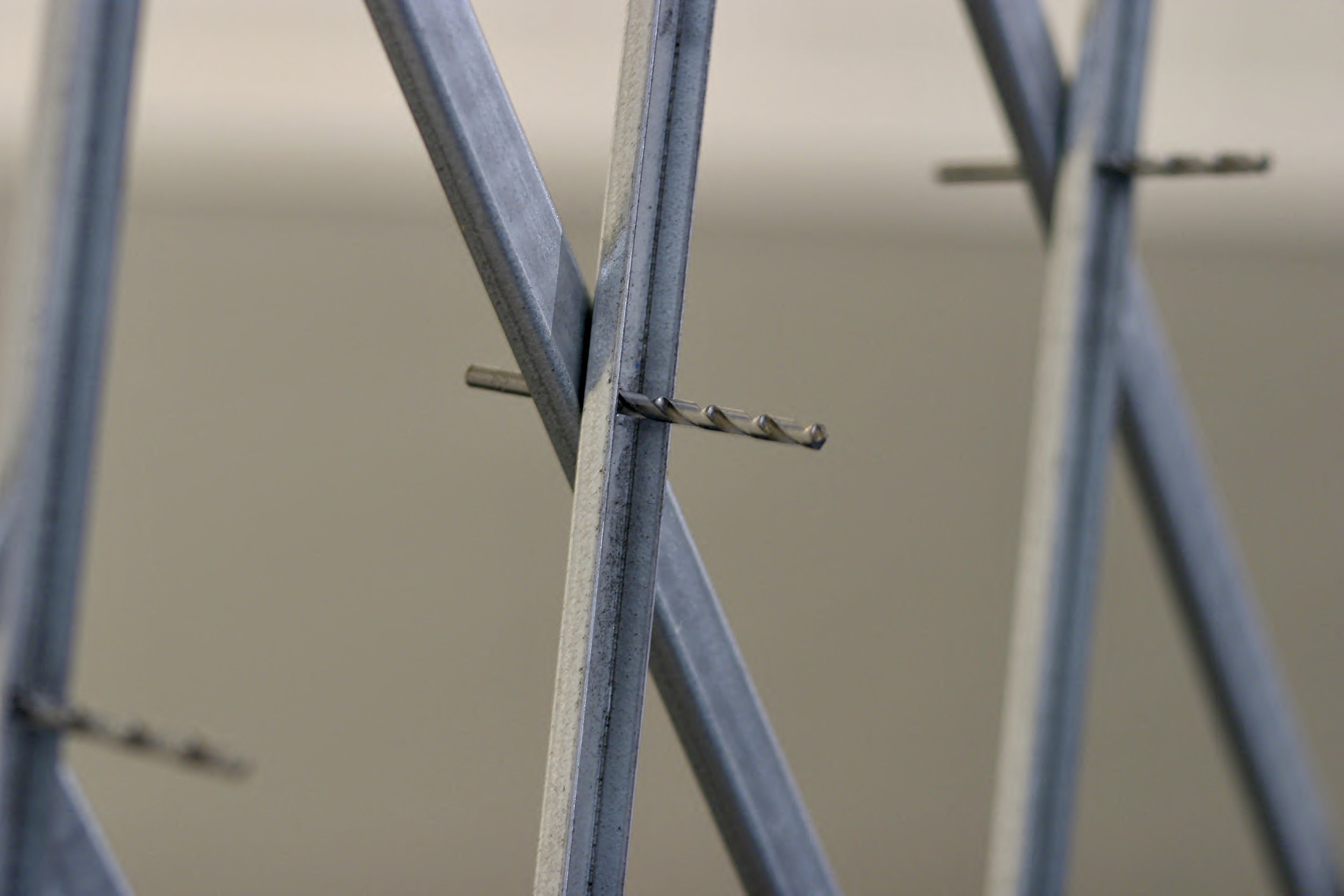
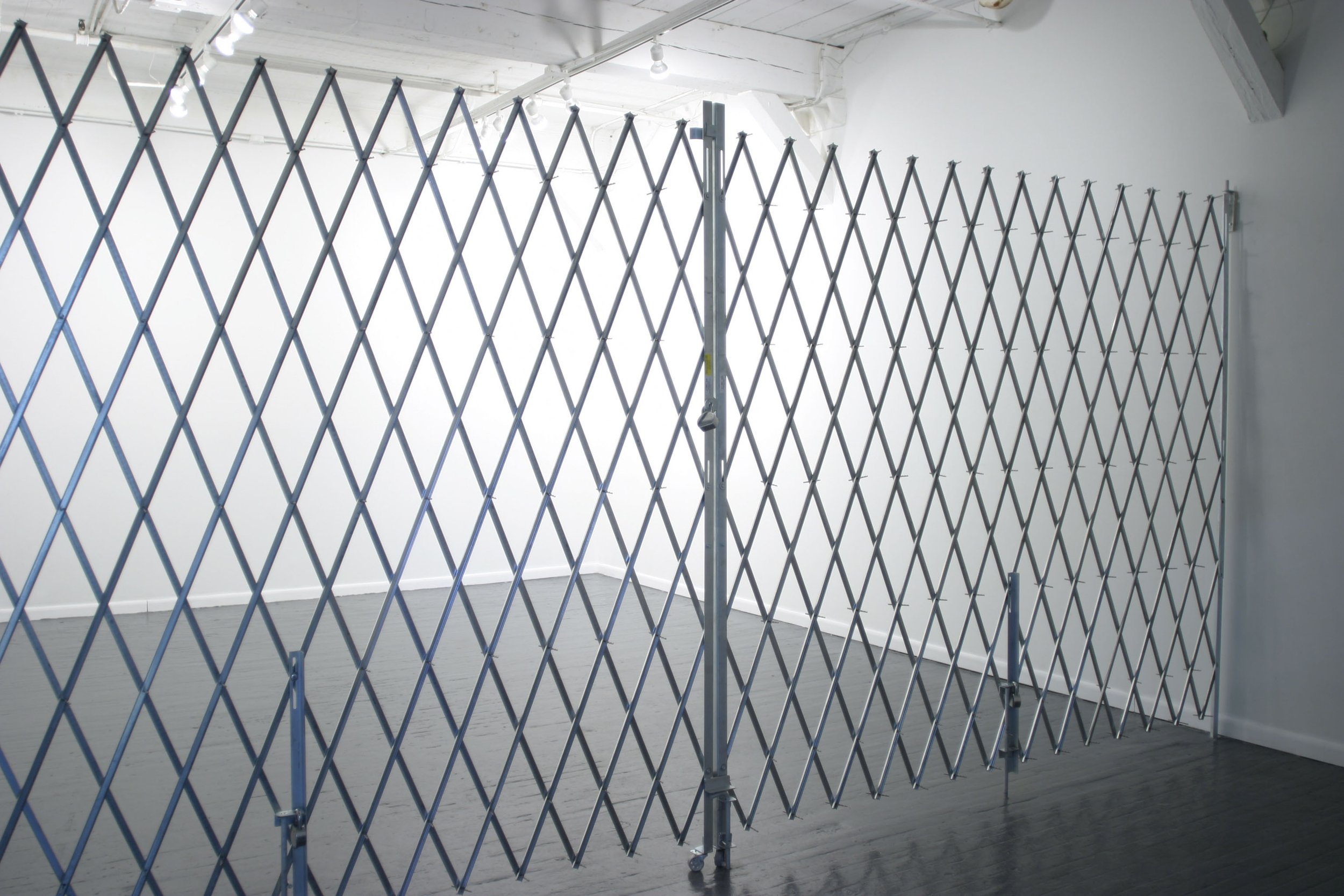
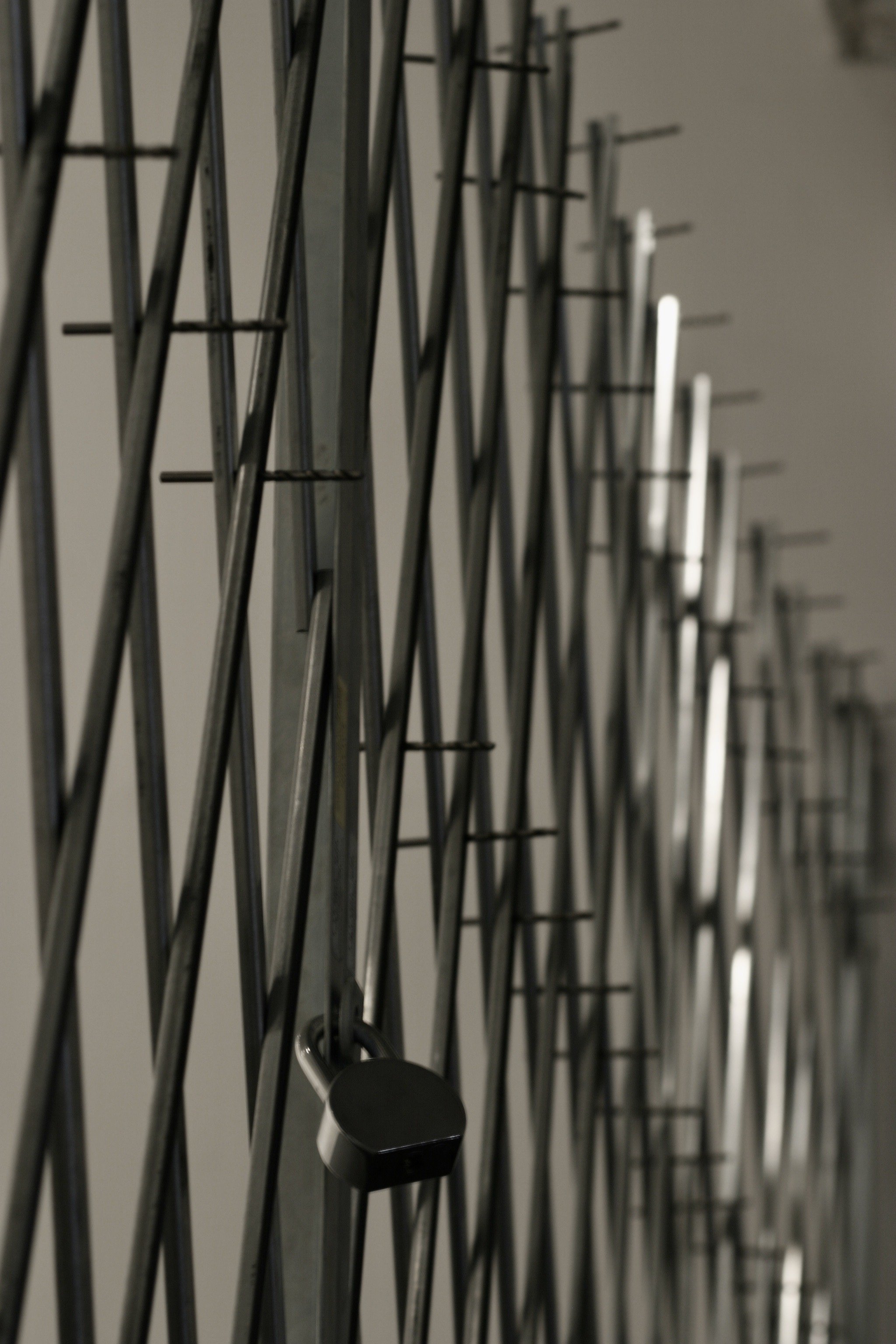

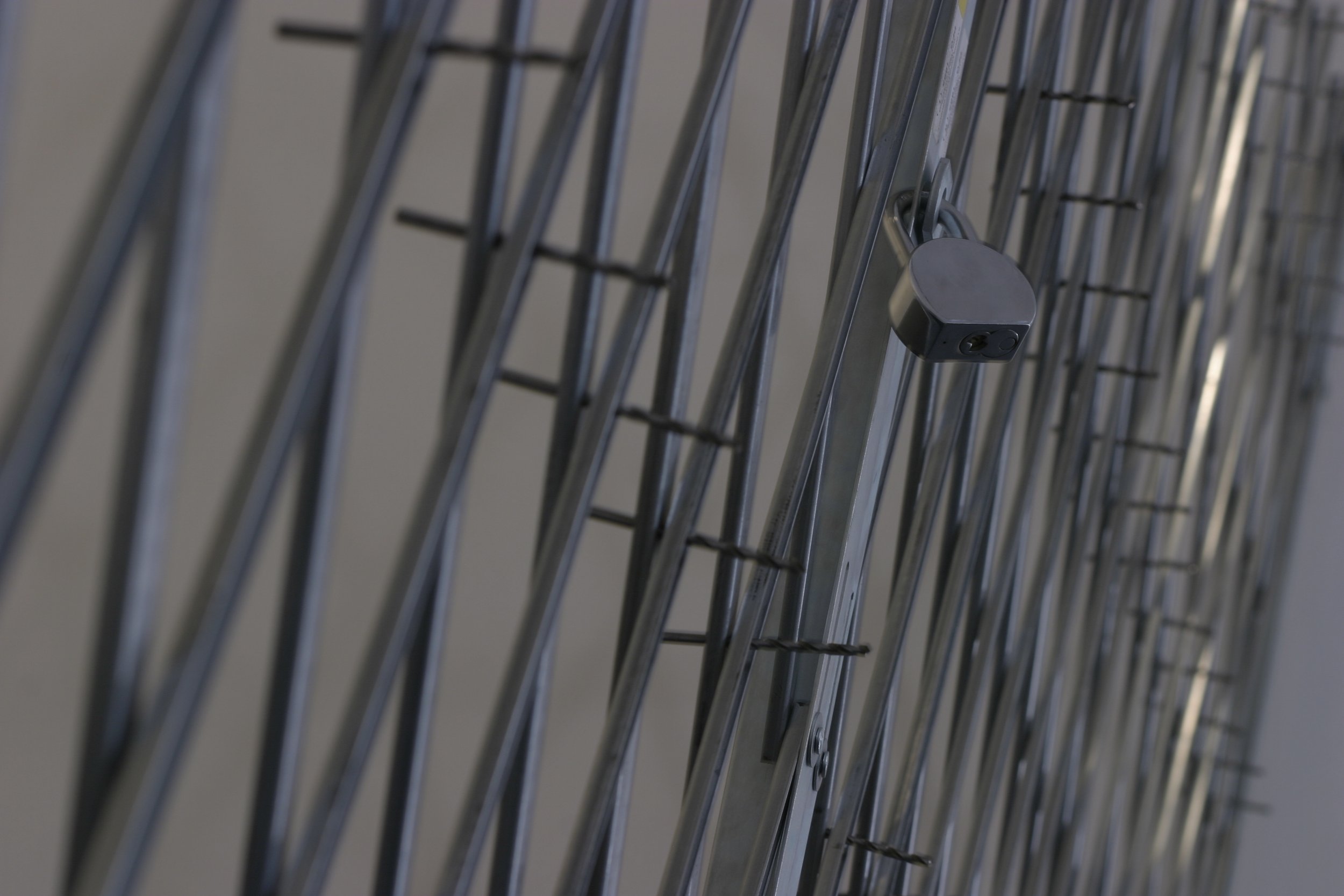
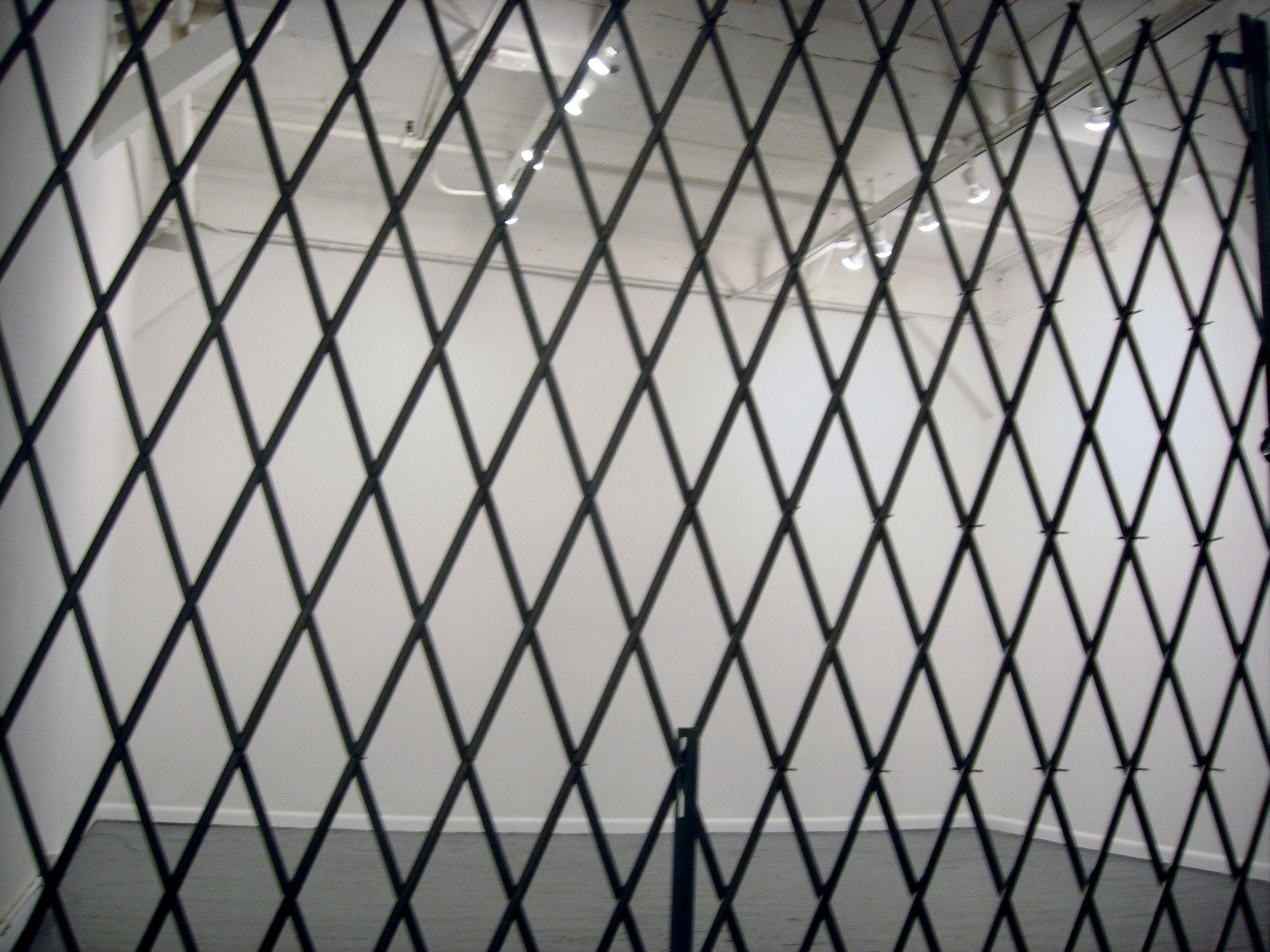
FIX is an installation in a gallery that is 18 ft. wide and 29 ft. deep. A steel folding security gate is installed wall to wall across the 18 ft. width of the room. It cuts the 29 ft. length of the gallery into two sections, one third is accessible to the viewer and two thirds is not. The space behind the gate is left empty and all of the light in the gallery is focused on those three walls. All of the rivets have been removed from the gate, and the drill bits used to do it are left in their place. In this way, the entire system has been compromised and is held together by the tool which was used to take it apart.



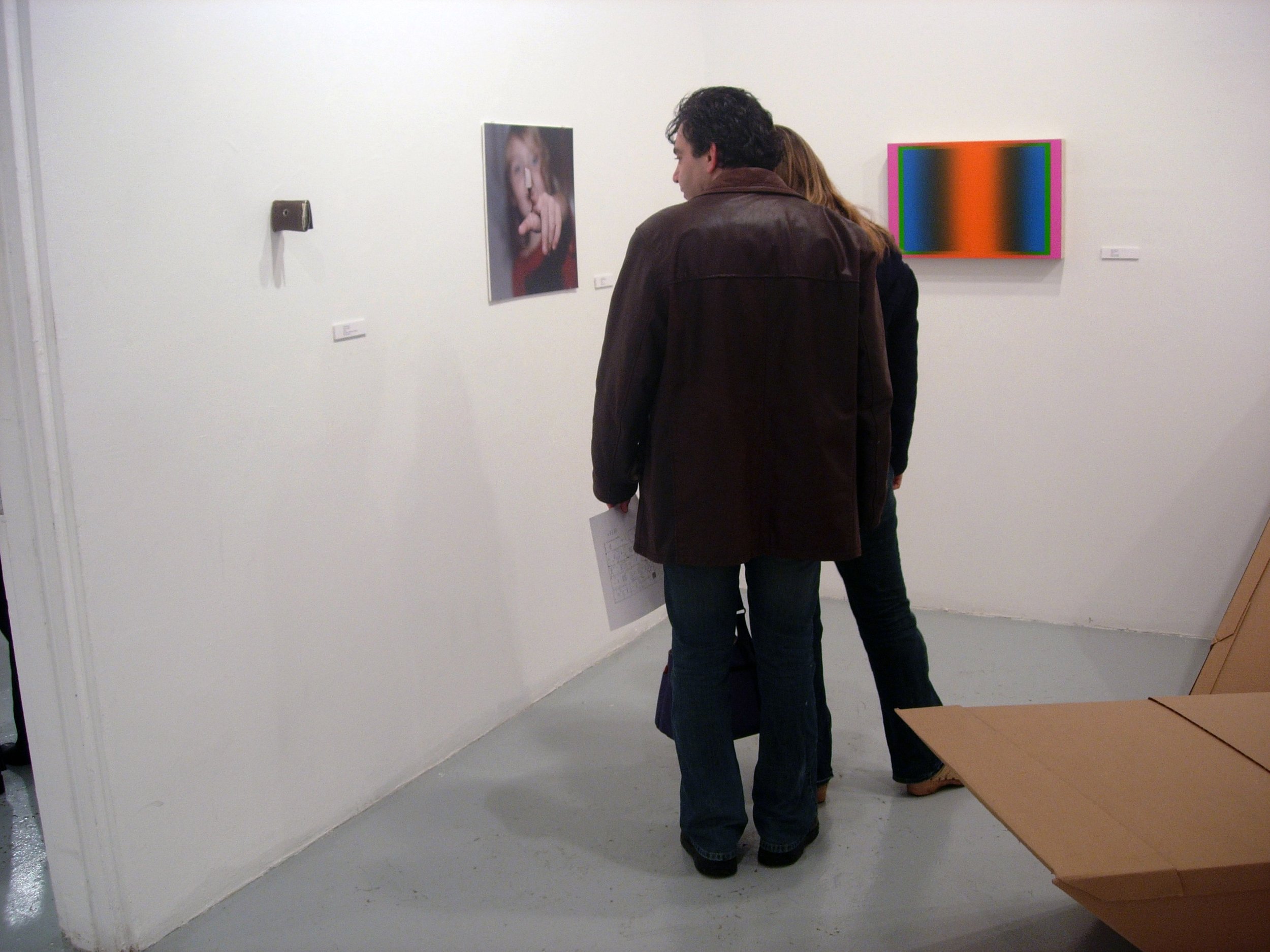


see through - my wallet with door viewer | sawed - two saws, one cut by the other
(installation views at Hunter College Times Square Gallery)

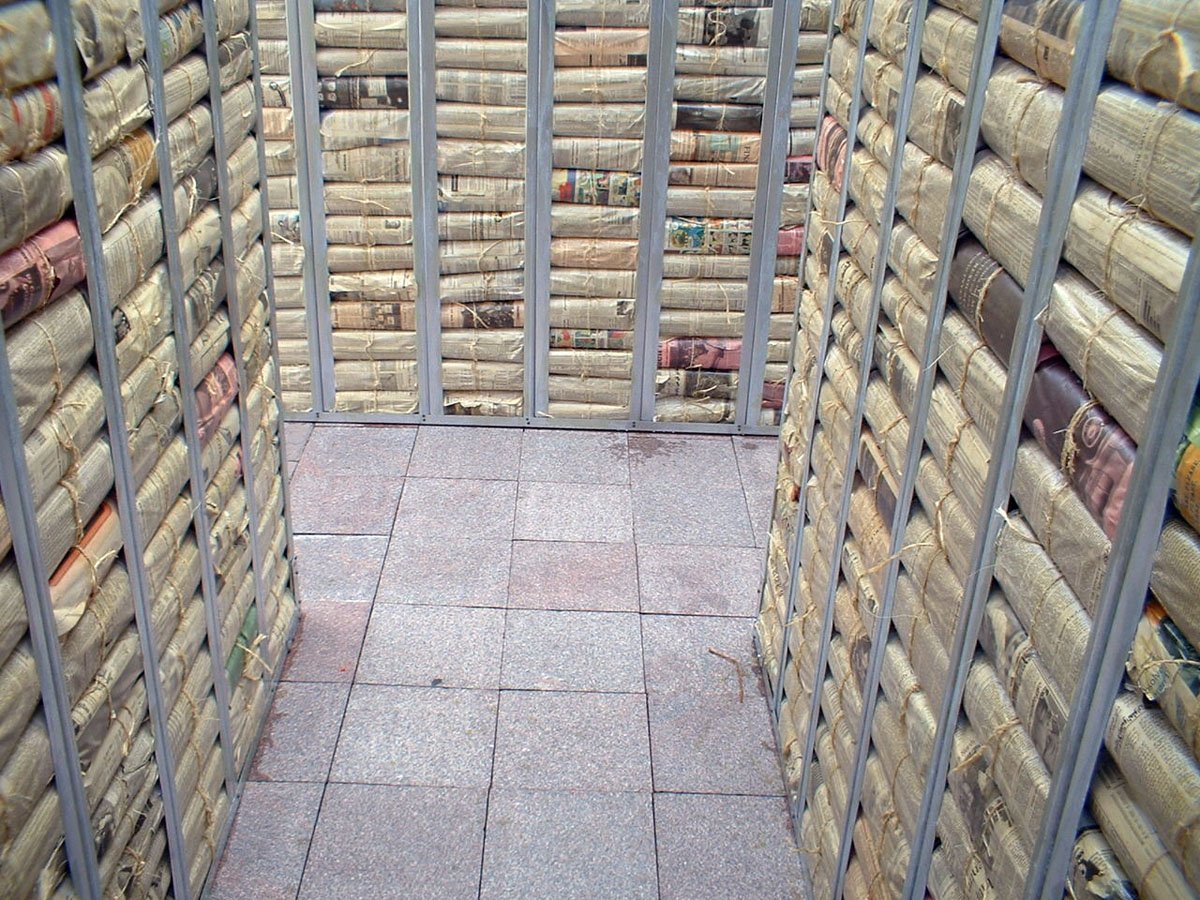




static, (steel studs, newspaper, glue) 16’ x 16’ x 18’
Static is a space organized by using steel studs to construct a rib-like skeletal form in the guise of three interconnected corridors. Its formal qualities are borrowed from the surrounding architecture and its function mirrors the setting by adding another system of entrances and exits. Walking becomes an important activity again as much in the making of the piece, as now in the experiencing of it. Vertical planes are filled and reinforced by thousands of contact cement covered newspapers between their ribs. While the empty horizontal planes give rise to the question of finished or unfinished. Is this fabrication or deconstruction? Is it going up or coming apart? It crashes into itself to form a language, and it is difficult to focus on any one piece of information.
blindwash - a document of light and air moving through a boundary






pipelines - a series of 2” steel pipes, heated in a forge, tied in knots, sometimes with a skin of glue soaked canvas

